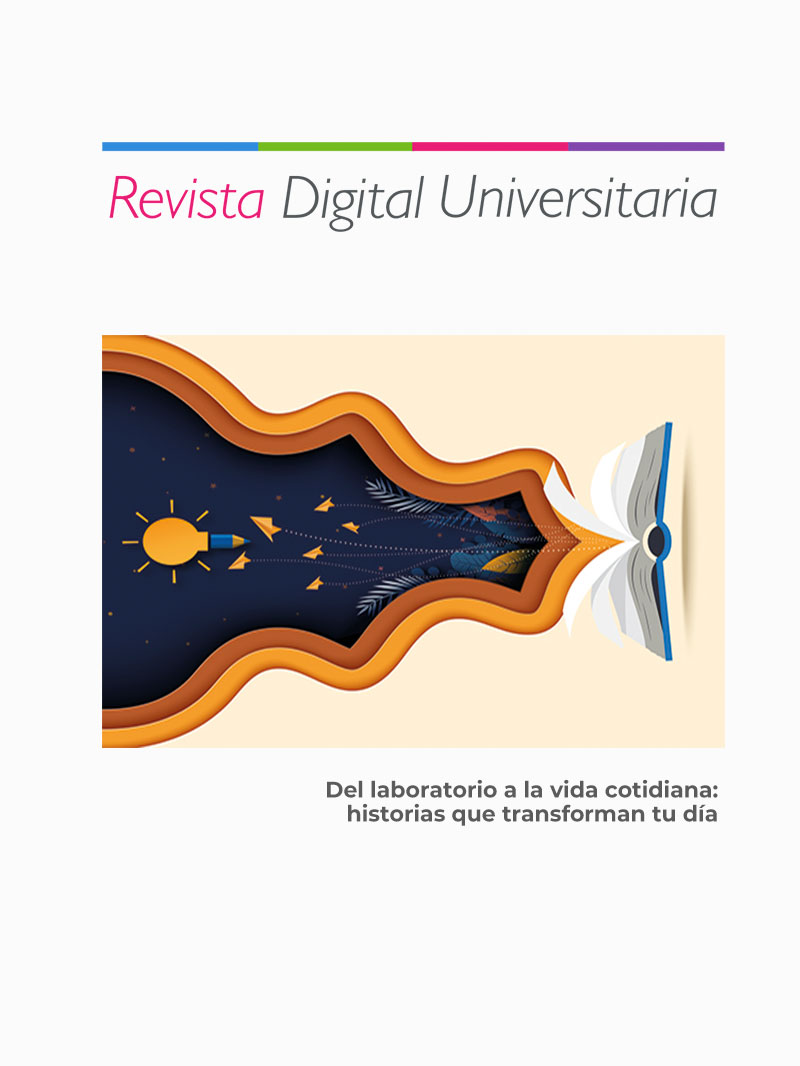Mexican medicinal plants: extraordinary laboratories for therapeutic development
DOI:
https://doi.org/10.22201/ceide.16076079e.2025.26.3.5Keywords:
traditional Mexican medicine, medicinal plants, secondary metabolites, natural products, pharmaceuticalsAbstract
Over the years, the use of medicinal plants has remained one of the most accessible health alternatives in communities around the world. Since plants lack mobility, they are vulnerable to experiencing environmental stress conditions, damage from microorganisms, and predators. To cope with these challenges, plants have developed various defense systems, including a sophisticated chemical system. This system involves the production of compounds known as secondary metabolites, phytochemicals, or natural products. These not only offer protection but also provide multiple benefits to our health. In this article, we invite you to learn what a medicinal plant is, how they produce substances with healing properties, and how Mexican medicinal flora is being studied for the development of new drugs.
References
Alamilla, L., y Neyra, L. (2020). Plantas medicinales. Biodiversidad Mexicana. Comisión Nacional para el Conocimiento y Uso de la Biodiversidad (conabio). https://tinyurl.com/yp66cu6j
Alonso-Castro, A. J., Villarreal, M. L., Salazar-Olivo, L. A., Gomez-Sanchez, M., Dominguez, F., y García-Carranca, A. (2011). Mexican medicinal plants used for cancer treatment: pharmacological, phytochemical and ethnobotanical studies. Journal of ethnopharmacology, 133(3), 945-972. https://doi.org/10.1016/j.jep.2010.11.055
Comisión Federal para la Protección contra Riesgos Sanitarios (cofepris). (2022). Herbolarios. Secretaria de Salud. https://tinyurl.com/yc6n69pj
Cruz-Pérez, A. L., Barrera-Ramos, J., Bernal-Ramírez, L. A., Bravo-Avilez, D., y Rendón-Aguilar, B. (2021). Actualized inventory of medicinal plants used in traditional medicine in Oaxaca, Mexico. Journal of Ethnobiology and Ethnomedicine, 17(7). https://doi.org/10.1186/s13002-020-00431-y
Dewick, P. M. (2009). Medicinal Natural Products: A Biosynthetic Approach (3.a ed.). John Wiley & Sons.
Fundación unam. (2021, 4 de noviembre). Química Natural, Plantas Medicinales [Video]. YouTube. https://tinyurl.com/3s8vtm2w
García de Alba García, J. E., Ramírez Hernández, B. C., Robles Arellano, G., Zañudo Hernández, J., Salcedo Rocha, A. L., y García de Alba Verduzco, J. E. (2012). Conocimiento y uso de las plantas medicinales en la zona metropolitana de Guadalajara. Desacatos, 39, 29-44. https://tinyurl.com/2b9vjzch
Govea-Salas, M., Morlett-Chávez, J., Rodriguez-Herrera, R., y Ascacio-Valdés, J. (2017). Some Mexican plants used in traditional medicine. En H. A. El-Shemy (Ed.), Aromatic and Medicinal Plants-Back to Nature (pp. 191-200). https://doi.org/10.5772/66637
Gusain, P., Uniyal, D. P., y Joga, R. (2021). Conservation and sustainable use of medicinal plants. En C. Egbuna, A. P. Mishra y M. R. Goyal, Preparation of Phytopharmaceuticals for the Management of Disorders (pp. 409-427). Academic Press. https://doi.org/10.1016/B978-0-12-820284-5.00026-5
Guzmán Maldonado, S. H., Díaz Huacuz. R. S., y González Chavira, M. M. (2017, noviembre). Plantas medicinales la realidad de una tradición ancestral. Secretaría De Agricultura, Ganadería, Desarrollo Rural, Pesca Y Alimentación; Instituto Nacional De Investigaciones Forestales, Agrícolas Y Pecuarias; Centro de Investigación Regional Centro. https://tinyurl.com/3h7dbjr2
Kennedy, D. O., y Wightman, E. L. (2022). Mental Performance and Sport: Cafeine and Co-consumed Bioactive Ingredients. Sports Medicine. 52(1), 69–90. https://doi.org/10.1007/s40279-022-01796-8
Muñetón Pérez, P. (2009). Plantas medicinales: un complemento vital para la salud de los mexicanos. Entrevista con el Mtro. Erick Estrada Lugo. Revista Digital Universitaria, 10(9). https://www.revista.unam.mx/vol.10/num9/art58/int58.htm
Lustre Sánchez, H. (2022). Los superpoderes de las plantas: los metabolitos secundarios en su adaptación y defensa. Revista Digital Universitaria (rdu), 23(2). http://doi.org/10.22201/cuaieed.16076079e.2022.23.2.10
Organización Mundial de la Salud (oms). (2023). Primera Cumbre Mundial de la OMS sobre Medicina Tradicional. https://tinyurl.com/36jc6d8m
Pang, Z., Chen, J., Wang, T., Gao, C., Li, Z., Guo, L., Xu, J., y Cheng, Y. (2021, 1 de marzo). Linking plant secondary metabolites and plant microbiomes: a review. Frontiers in Plant Science, 12, 621276. https://doi.org/10.3389/fpls.2021.621276
Singh, R. (2018). Chemotaxonomy of medicinal plants: possibilities and limitations. En S. C. Mandal, V. Mandal y T. Konishi (Eds.), Natural Products and Drug Discovery (pp. 119-136). https://doi.org/10.1016/B978-0-08-102081-4.00006-X
Sofowora, A., Ogunbodede, E., y Onayade, A. (2013). The role and place of medicinal plants in the strategies for disease prevention. African journal of traditional, complementary and alternative medicines, 10(5), 210-229. https://doi.org/10.4314/ajtcam.v10i5.2
Zhao, Y., Liu, G., Yang, F., Liang, Y., Gao, Q., Xiang, C., Li, X., Yang, R., Zhang, G., Jiang, H., Yu, L., y Yang, S. (2023). Multilayered regulation of secondary metabolism in medicinal plants. Molecular Horticulture, 3(11). https://doi.org/10.1186/s43897-023-00059-y
Published
Issue
Section
License
Copyright (c) 2025 Revista Digital Universitaria

This work is licensed under a Creative Commons Attribution-NonCommercial-ShareAlike 4.0 International License.

Revista Digital Universitaria es editada por la Universidad Nacional Autónoma de México se distribuye bajo una Licencia Creative Commons Atribución-NoComercial 4.0 Internacional. Basada en una obra en http://revista.unam.mx/.










